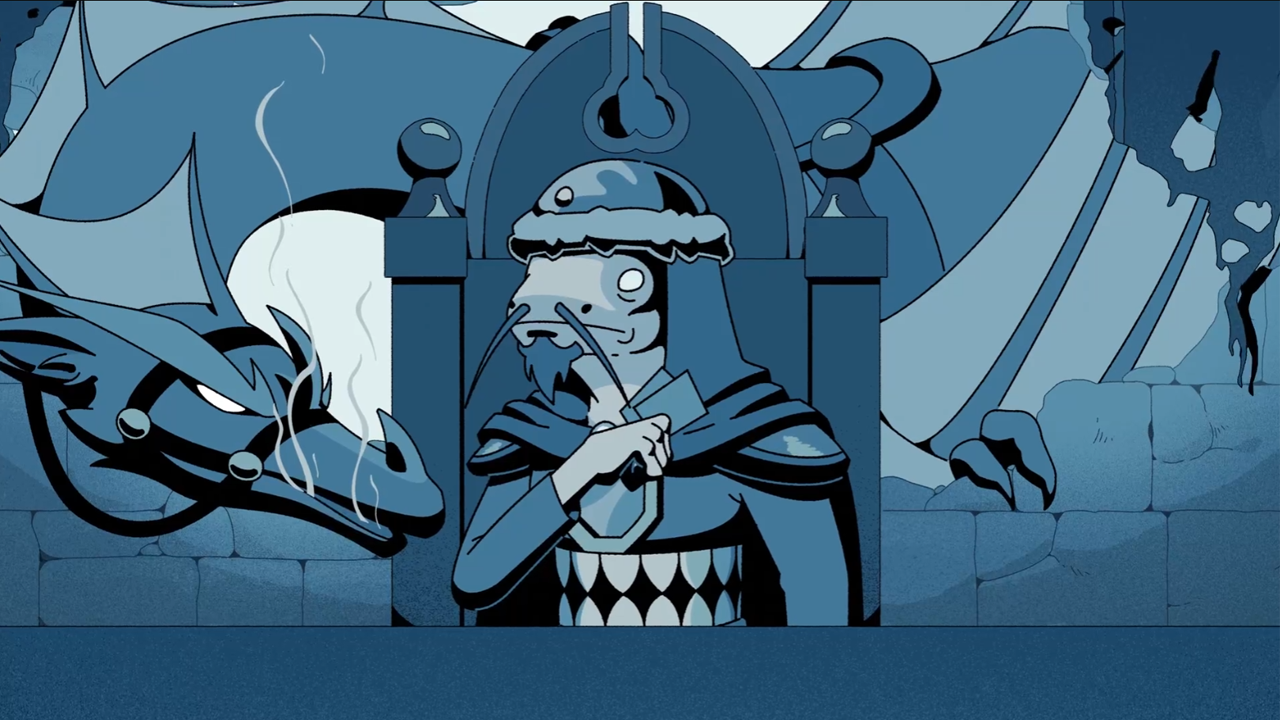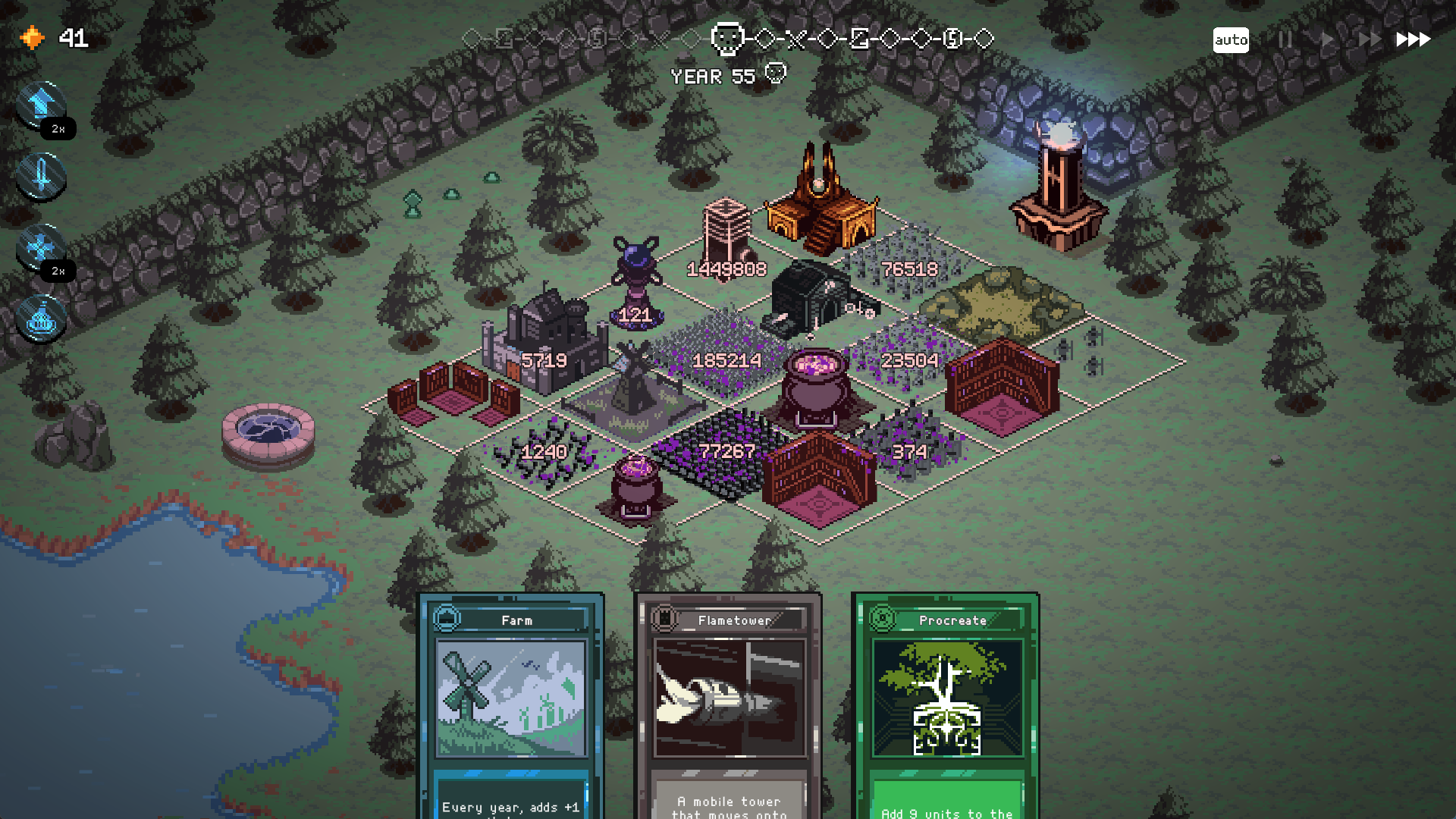9 Kings is worth tracking on its early access journey
9 Kings may still be in early access, but it's already one of the year's best games

I’ve followed a lot of early access titles from their initial launch to the 1.0 re-introduction, and every one goes basically the same way: exhaust the content, then check back in two or three patches down the line. I did it with Slay the Spire, I did it with Dead Cells, and I’m currently doing it with Windblown, the new game from Motion Twin, the folks behind Dead Cells. Hell, even Hades, a game I devoured in early access, was a title I’d only come back to after a few patches had settled. But there’s always an exception that proves the rule. 9 Kings, from developer Sad Socket, is an early access game I fire up each and every time one of its frequent patches hit.
9 Kings is a “roguelike, kingdom-builder” that’s also an auto-battler — a genre I have developed quite an affinity for over the last few years — and hit Steam early access in May of this year. Since then, the game has added 14 patches. Some added major additions to the game (like one of the game’s titular nine kings), while others focused on reworking older units, or completely overhauling the game’s meta progression perk system. It’s because of that varied approach that I can boot up the game and guarantee I’ll be seeing something a little different than I saw last time I played.

You start a run in 9 Kings by picking one of the game’s eight playable kings — there were only seven kings at launch — which represent eight different kingdoms, all of which have their own units, buildings, and perks. Once you’ve selected the King of Nothing, King of Nature, King of Greed, or whoever, you’ll start year 1 of your kingdom by placing your signature unit — exclusive to that king — on a 3x3 grid. You’ll then get dealt a hand of three cards (I know, bear with me) belonging to your kingdom. With one of your nine starting grid slots taken up by your signature unit, you’ll need to put down another card on one of the remaining spaces. Once you’re down to just two cards in your hand, the year comes to a close.
As you place the cards on the field, fully pixelated units, buildings, or towers spring from the ground and populate the grid. And as the year ends, enemy forces gather in the fields outside of your kingdom, and your units march out to meet them. The yearly battle is one of the only times you have direct control over combat, as you’re able to control your signature unit. One king might grant a rock catapult that you can continually click onto the backline of your foe. Another King may summon a small army of Imp demons, which you can place anywhere on the battlefield with your clicks. For every battle you win, you are able to pick from a selection of cards to add to your hand — but if you lose three battles before year 30, you’re eliminated.

This is where 9 Kings gets particularly interesting, and it’s why each new update — no matter how big or small — helps spice the game up significantly. You’re always at war with at least three other kingdoms in 9 Kings. At the start of the game, you’ll be randomly assigned two of the other playable kings to be at war with, and you’ll always be at war with a rebellion from your own kingdom. When you defeat an enemy kingdom or the rebellion in battle, you draw from their deck of cards, not your own. So while you may start as the demonic King of Blood, you may find that you have cards from the King of Nothing and the King of Progress on your board by the time you reach year 5.
This hybridized kingdom building creates some fascinating combinations. The Mangler turret for the King of Blood eats a soldier from an adjacent unit each year to grow in power (weakening the soldier in exchange for the turret). However, when paired with the King of Greed’s Mercenary card, which gains or loses a set amount of soldiers each year depending on how much gold you have, your Mangler can devour for, essentially, free. There are dozens of even more complex combinations like this in 9 Kings, and every small patch or adjustment seems to add more.
Games typically end at Year 33, but you can keep it going in the Endless Mode, which the game warns you can scale out of control. However, with a good enough build, you can break it even further. After Year 99, I was told the game may crash if I continued, and this is what Year 103 looked like.
With the game’s clever perk system — which asks you to place nodes on a grid, allowing you to combo adjacency bonuses to enable even more powerful starts for your kings as you level them — and the escalating difficulty levels per king, 9 Kings has a lot going on just four months into its early access life. Even when I put the game down to play something else for a bit, I still have kings I’ve barely even touched. And with at least one entire king left to add, it doesn’t seem like I’ll be exhausting all of 9 Kings anytime soon.
Everyone’s relationship with early access is different, and I genuinely love having a rotating cast of early access games. But there’s something about 9 Kings that just begs me to jump in the moment I see that blue text on Steam that signifies an update.
Early access has created some of the best games in the last decade. It’s a great way to get in, check something out, and support the developers on their way to making their version of their masterpiece. But with some early access games, like 9 Kings, the journey is just as fun as the destination.




